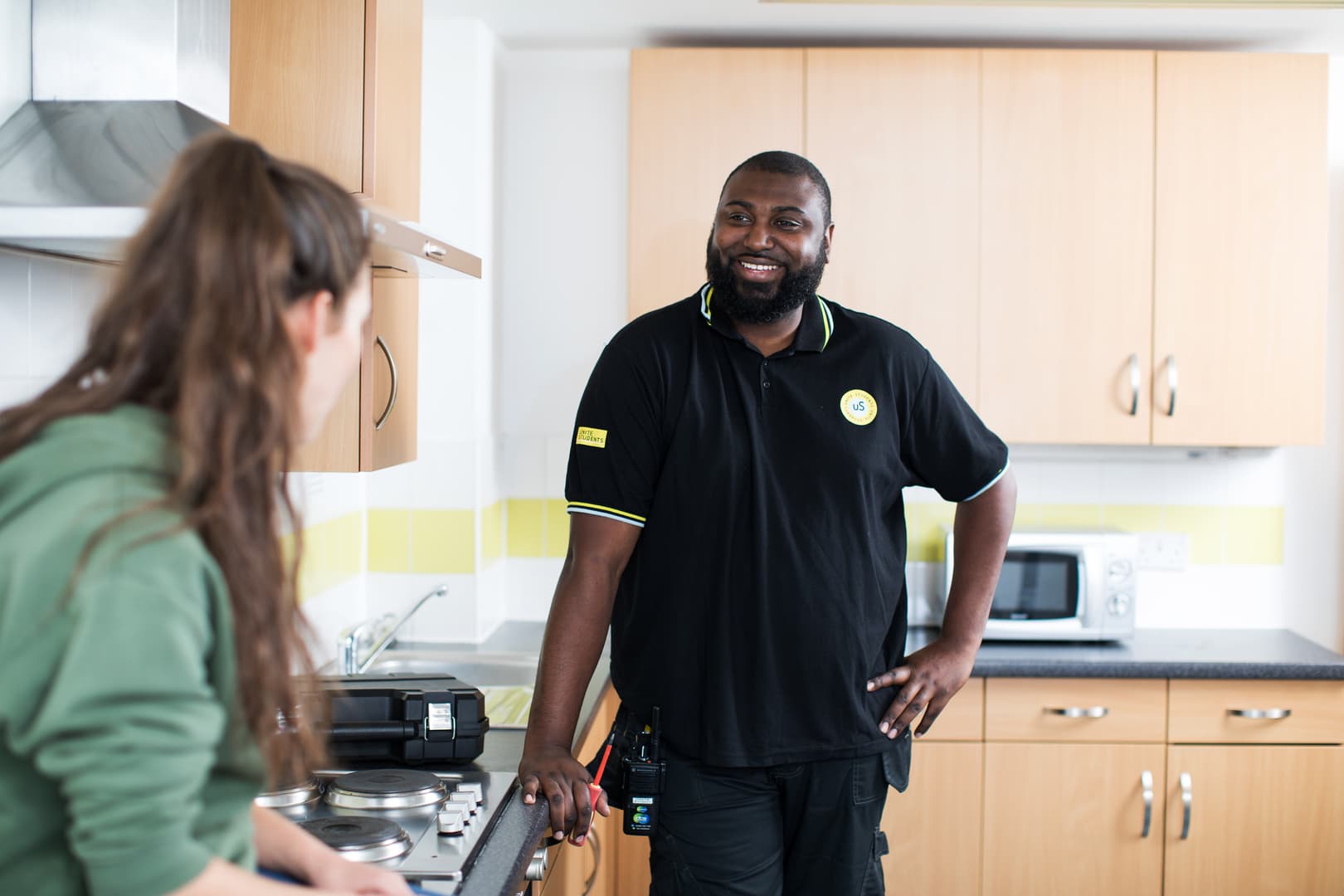Leading by example: Inclusive leadership in student accommodation
19 May 2021
Frankie O’Connell, Head of Operations for London, explains the importance of inclusive leadership, how to achieve it, and how it benefits the wellbeing of employees and students.
With social discrimination so markedly in the public eye over the past year, diversity and inclusion has come to the fore in all walks of life, impacting organisations in ways that many have previously not had to consider – particularly with regard to how these matters intersect with employees’ wellbeing. Student wellbeing has been a key priority for Higher Education for the last few years, but more can be done to ensure employee wellbeing in the sector is a priority – particularly given the diversity of staff in many frontline accommodation teams. This starts with team leaders within organisations doing more to enable their team members to feel safe, be themselves, and flourish as a result.
The definition of wellbeing is ‘a state of being comfortable, healthy and happy.’ We all know that fostering and promoting wellbeing can prevent stress and create a positive working environment in which employees can thrive. However, wellbeing at work has long sat within the realms of occupational health and employee assistance programmes which, while important, don’t support day to day nuances of wellbeing – whereas being mindful of wellbeing in everyday interactions between teams can facilitate a more inclusive and welcoming environment.
Recent events have reminded us that the world is not fair or inclusive, and the notion of difference is painful for people to come to terms with. The workplace often reflects wider socioeconomic issues; after all, society is made of the same people that work within businesses, and so these matters can seep into our working lives. As such, organisations play a key role in tackling the issues we face as a society around inequality, and universities and accommodation providers can arguably do more than most by setting a positive example to the students that study or live with us.
An inclusive working environment that celebrates, embraces and encourages difference and diversity in all its forms has specific wellbeing benefits: it empowers employees to be themselves, have a sense of belonging and safety, and as a result, perform better as a team. It can be a steep journey to get there – but, to me, there are three key factors that can smooth it.
The first is leadership. Leadership is a mechanism for positive change that is often underestimated and underused within working environments. Getting leaders to recognise the role they can play in creating a more inclusive environment for their team members, and what they can do to help them flourish, is crucial.
Then there’s self-awareness. This is about a leader knowing who they are, the impact they have, and questioning what they do, in order to authentically be themselves at work. By doing this, they show their teams that it’s ok – and encouraged – to be yourself. A self-aware team leader will also encourage this in their team members by asking the right questions and creating a safe environment for them to be themselves. Authentic leaders generally exhibit trust, honesty, vulnerability and integrity, and by default encourage this in others.
Next is ensuring psychological safety for team members: taking active steps to ensure positive, inclusive behaviours are role modelled and encouraged, so that team members feel genuinely safe in being themselves. Employees need to know that their team leader supports them and will address incidents in which difference isn’t embraced in an appropriate and kind way with all so that everyone learns from the experience.
Teams can be fraught with vying objectives, focuses, viewpoints and characters – and as a team leader, you have the responsibility of calming the group down so that competing concerns can be raised, observed and allowed to exist harmoniously. This means being able to get teams used to having differences in opinion and style, balancing out conflicting demands, and facilitating conversations between the group so that everyone feels safe. This is also a useful example to set for front-line teams who sometimes have to manage disputes between students in their flats.
By making employees feel safe to be themselves, and encouraging an empathetic and constructive approach in responding to differences within the team, colleagues can understand, embrace and empathise with differences within the group. This ultimately contributes to a high performing team built with a range of skills, lenses and backgrounds – which is what an inclusive environment is all about.
As the Head of Operations for London, our team of 350 blended with our 12,000 students from all over the world is a wonderful and diverse environment, and I therefore have a huge responsibility to make sure I create as inclusive an environment as I possibly can.My team and I have a responsibility to encourage and create environments where both our team members and our students can flourish, and it’s an absolute pleasure to mindfully approach this topic with the team to make some much-needed changes to the way in which we approach everything we do.
Our goal is to ensure that we have comfortable, healthy and happy teams and students. Wellbeing is therefore at the forefront of what we do, and we will continue to do this by improving our own self-awareness, our leadership capability, and our ability to help people and groups as leaders so that we ourselves and others can be authentic at work. Whilst our journey has just started and there will be many learnings on the way, we are clear this is about us all doing this together, both with each other and for each other.

